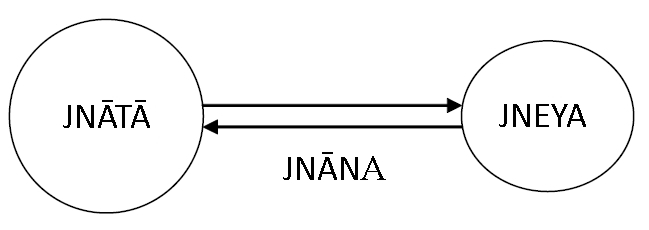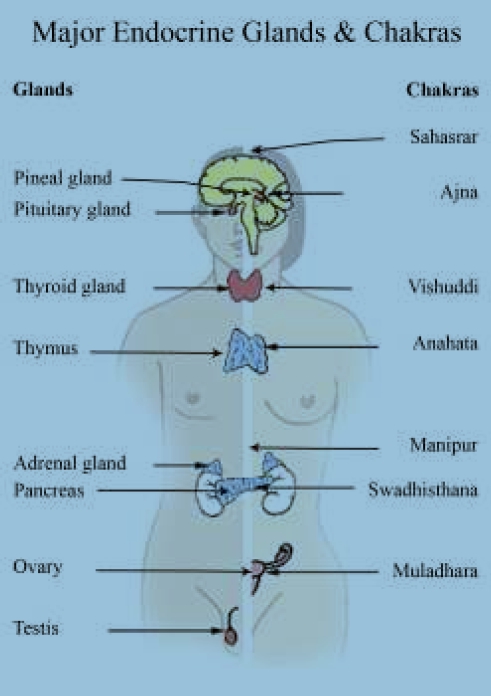JñānThe best course to master good conduct is to begin with small steps. These simple and small steps are called AAnuvrats (small vows). The Five main Anuvrats are as follows:
- Avoiding injury to mobile beings which have two or more senses or desisting from deliberate acts of violence.
- Truthfulness to avoid false statements out of extreme affection or hatred for someone.
- Refraining from taking anything not given.
- Desisting from sexual relationship with any one other than one's spouse.
- Voluntarily minimising the possession of all forms of assets.
These can be supplemented by more Anuvrats such as confining movement within a limited area, saving the environment from wanton destruction, avoiding sinful acts for a predetermined short period of time, observing fast, limiting use of consumable and non-consumable goods and sharing food etc with others. These small steps will go a long way as one gets benefited in physical, mental and spiritual health and leads to sustainable environment.
In a typical Jain home it is prohibited to waste food, water and electricity (and other forms of energy) and people try to minimize hurting the feeling of others, by their deeds, speech and thought. Every year a universal day of forgiveness is observed. After a 8 or 10 day period, called Paryushan, of observing various Jain rituals (fasting, maun, samayik, Pratikraman etc.), to the extent possible to purify body, mind and soul, everyone seeks forgiveness, not only from those with whom they interact but from all the jivas of the universe and, at the same time, also forgive them. This mutual act of seeking and granting forgiveness, eliminates several serious karmas and bring harmony and peace in the world.
Fig. 6.1
The interaction between the knower (jnātā) and the object (Jneya) via knowledge (jnān) indicating that an observation modifies both the knower and the object, making it impossible to know their “state” completely at any instant by any observation.
Mati jñānMeditation empties one's mind of undesirable information and when the mind is empty, true knowledge will spontaneously descend in it. This happens because the nature does not sustain vacuum and absolute vacuum cannot exist anywhere. The knowledge already exists within self, but does not appear because it is covered by jñānāvarniya karma. Jñān is pure knowledge, uninfluenced by the mind of the subject or the appearance of object. Knowledge is usually information and in this context Jnân is something more than knowledge as it implies wisdom and not just information.
As mentioned before, the universe consists of jiva and ajiva, the knower and the known. So there are three entities Jñātā, Jñeya and Jñān i.e. the knower, the known (object) and knowledge (Fig. 6.1). The Jnātā and Jyeya, both continuously modify each other through Jnān, i.e. by interaction and transfer of knowledge. Observations influencing the state of an object has been discovered by science and is called the Uncertainty Principle, which states that all the attributes of an object cannot be simultaneously determined with precision because the object changes with each measurement as will be discussed in Chapter 7. The effect on psyche or knowledge of the observer by observing an object is obvious because that is how knowledge is gathered. This is also the physical basis of Darwinian evolution. Evolution takes place in steps (quantum states) when jiva interacts with the physical world and modifies itself. Every time Jiva observes a physical object or process, its state of mind changes. This also explains how worshipping an inanimate statue of the Lord changes the state of a person. The changes could be to a higher or lower conscious state, depending on the interaction. This is happening all the time, albeit in infinitesimal steps but the cumulative effect over the ages is clear as discussed in chapter 1.
When the distinction between the three of them i.e. Jnātā, Jneya and Jnān dissolves, only jñān remains and Jnātā and Jñeya disappear. That is the state of pure knowledge. It is said that jnān is the "body" of the Siddhas.
Jainism recognises Jnāns of five types: Mati jñān (sensory knowledge), Shruta jñān (scriptural knowledge), Avadhi jñān (clairvoyance), Manahparyāya jnān (telepathy) and keval jñān (omniscience). Mati and Shruta jñāns are sensory and Avadhi, Manaha paryāya and Keval jñāns are extra-sensory.
Fig. 6.2
Various chakras in the body (right) correspond to various glands (left), which can be activated by practicing various yogasans, Seven main Chakras are shown.
It is the primitive, innate type of jñān, one which is born with and acquired by sensory interaction with the environment. Even primitive jivas, including single celled species have it in some measure or form.
Shruta jñān is the one acquired by interaction with persons or scriptures. This leads to one's evolution and then gradually it becomes part of mati jñān. All jivas acquire it by interaction and only some higher animals are capable of acquiring high level of shrutajñān through teachings of the Guru or scriptures.
Avadhi jñān (clairvoyance) is the knowledge transcending space and time. To a limited extent it is sensory and can be acquired by training of the mind or by acquired siddhis. Many scientists can tell about the past and future of various objects, near and far in the universe by using some theories or using some indriya (sensory) enhancing instruments of seeing and listening, e.g. through telescope, microscope etc. However, to a large extent the Avadhi jñān is extra sensory.Manah paryāyjñān is entirely a capability of consciousness. When one practices non-violence in totality, one can enter or read thoughts of others.
Keval jñān (Keval implies "only" and jñān means knowledge) implying that one loses all identity of body and mind except the knowledge one possesses; a stage of consciousness (chetanā). This jñān is super sensory. It can be acquired, not by sensory organs but by the consciousness. It is a state in which one can see all the paryāyas of all dravyas, in time (past, present and future) and space all at once. It is acquired in the state of Samādhi. It is Omniscience.
Attitude (Bhāvanā):The attitude of a person practicing Jainism towards himself, others and the universe changes. He continuously ponders over the basic aspects of Jainism and this is described in 12 attitudes. These can be summarized as follows:
"Oh Soul, Whatever you see around is perishable (kshan bhangur), exists by coincidence and is not everlasting (anitya). You are absolutely alone (nitānt akelā) and there is no one in this world to protect you (give you sharan); your karma is your only protection and can save you. There is no happiness (sukh) in the world; everyone is indifferent (parāye). This body in which you reside is impure, abode of bones, flesh, blood and excreta. It looks alive and beautiful only because of your (Ātmās) presence in it. Here everyone is trying to involve you in sensual pleasures, jealousy, attachment and anger (Rāga, dvesh, moha and krodh). Take all this as false and get totally involved in your own self. By penance free yourself from worldly bondage and by various practices (japa, Tapa, sheel, sanyam and tyāga), roam in your consciousness and attain the correct perception, true knowledge and perfect behaviour (Samyag darśan, Samyag jñān, and Samyag charitra). Equipped with Anekanta, moving on the path of Dharma, following Syadvad, free yourself from all bondages and reside in the Siddha sila.
Everyone is aware of the impermanence of life. We all know that we are bound to die but when and how we do not know. Whether tomorrow will come first or the next birth (i.e. death) we do not know. This should be borne in mind all the time and is adequate to motivate us for the pursuit of enlightenment.
Mokṣa
Physiological, psychological and spiritual effects of Jain practicesBy practicing the Jain path, described above, the self ultimately becomes free of all bondages, good and bad, and sheds all the material particles bound to it, even the finest karmānus. In this state, the self attains state of unprecedented purity and the highest level of consciousness. In this state the self "perceives" everything past, present and future without the assistance of sensory organs, all at once. The ecstasy of this state can be verily compared to a blind man getting vision. Just this one reason i.e. to know everything as it is, is compelling enough for one to seek omniscience and follow the path of Mokṣa. In this state of omniscience the soul acquires the correct perception and infinite powers. The Self experiences jnān, ānand, chetanā and virya in infinite measure. Having achieved its goal, the soul then does not have to go through the cycles of rebirth, and eternally exists in a permanent state of bliss, at one (upper) edge of the universe (Siddha sila). The ultimate goal of the universe seems to be the separation of jiva and ajiva in their pure states: the souls moving to Siddha sila and eternally staying there and the matter remaining in the Loka.
According to Jainism, a body is a multi-layered entity. The various procedures described in the previous chapter like Tapa, which mostly include dietary practices, Dhyān, maun, sāmāyik etc., are directed towards shedding of karma, and affect the body, mind and soul at all levels. These effects have been demonstrated convincingly but have not been quantitatively documented. The physiological effects enhance metabolism by activating various chakras (Fig. 6.2) and result in improvement in body parameters like oxygen consumption, blood pressure, diabetes etc; the psychological effects include changes in EEG (electro encephalogram, such as stable alpha and theta brain waves recorded during trancendental and Zen meditation), better concentration, and capacity to face adverse situations with calm and peace. The spiritual effects include acquisition of several types of siddhis and moving to higher Gunsthāṇs.
 Prof. Dr. Narendra Bhandari
Prof. Dr. Narendra Bhandari


